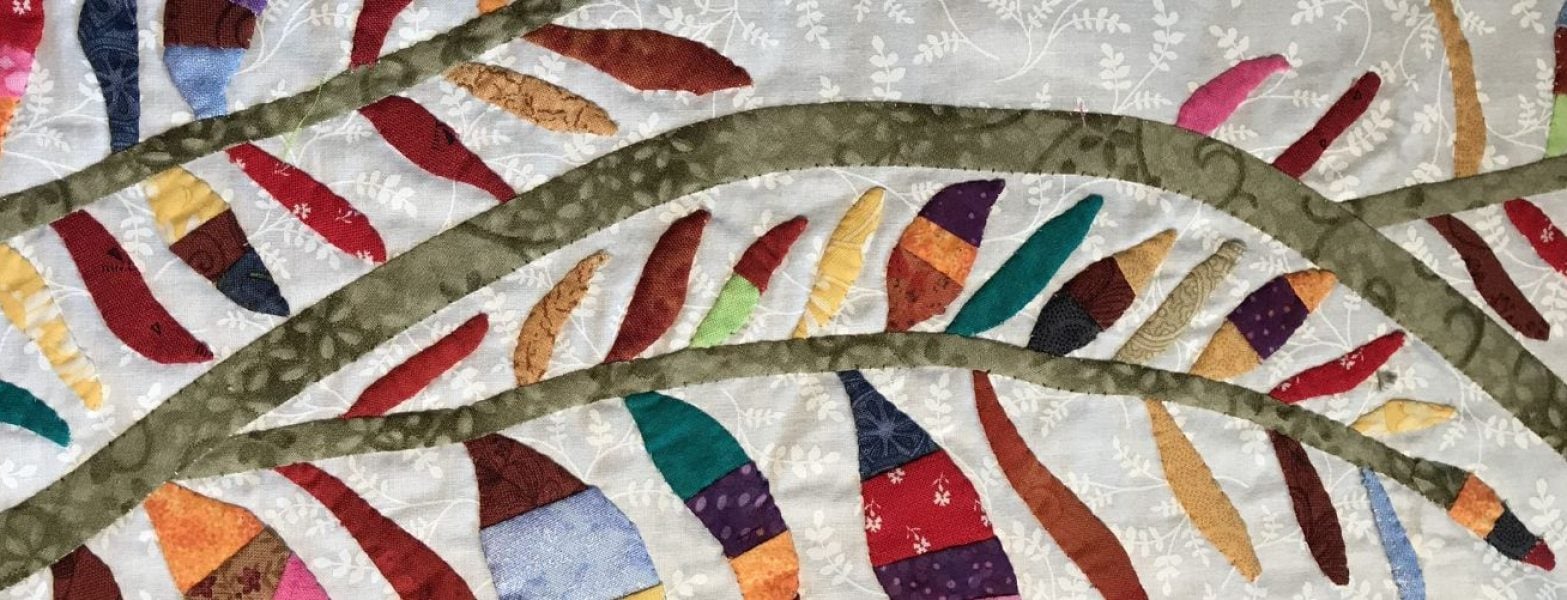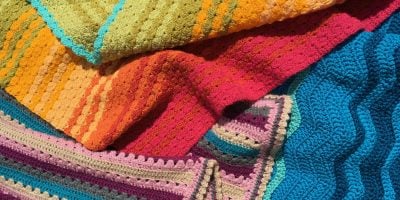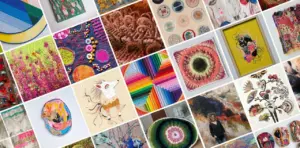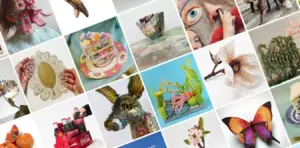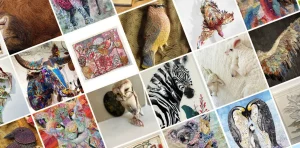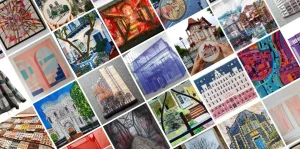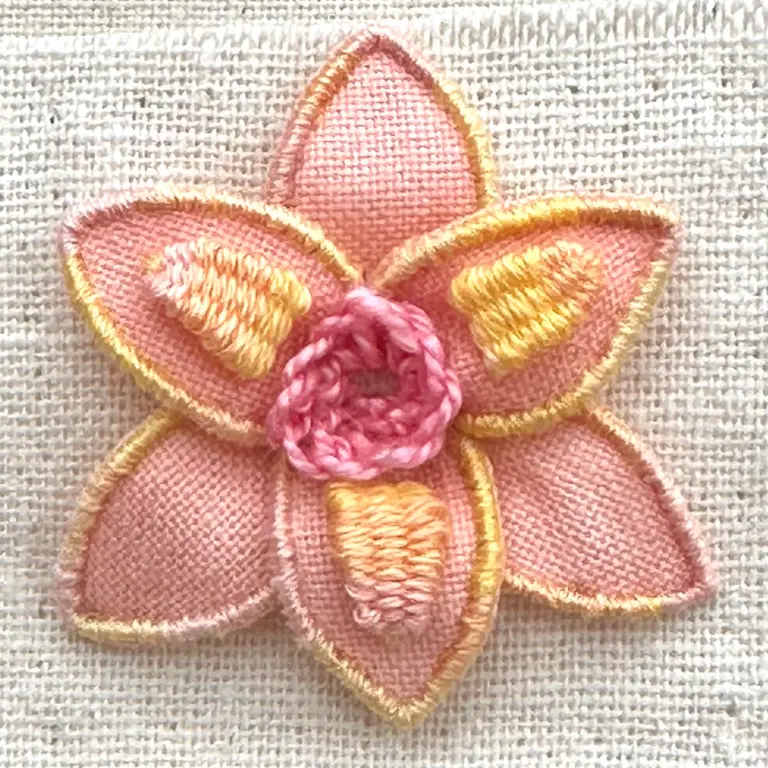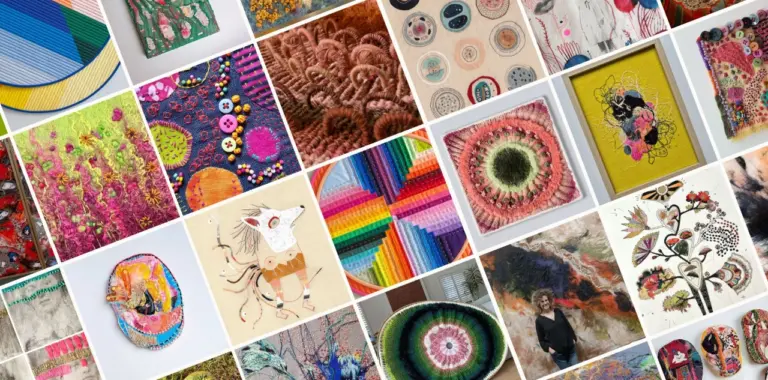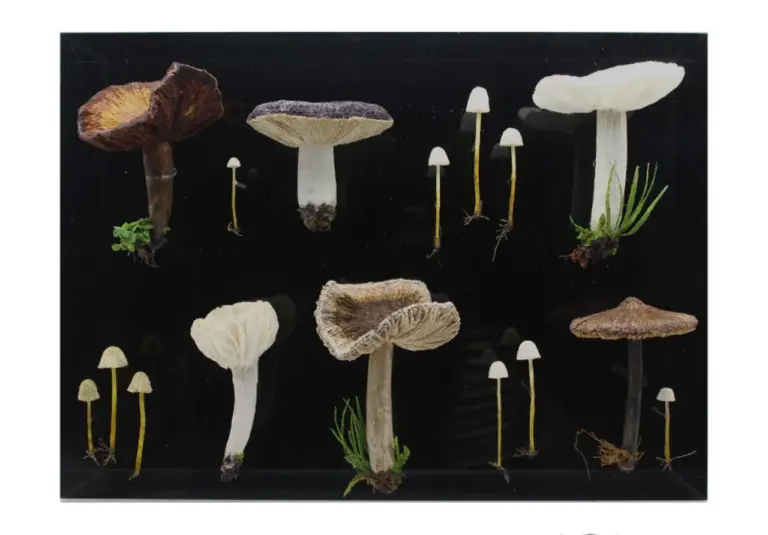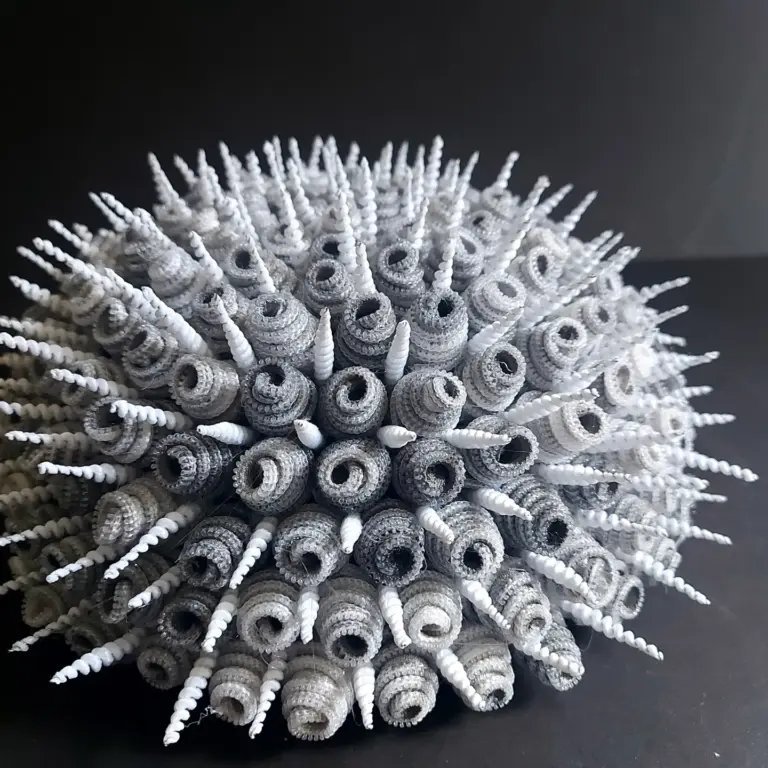Appliqué is a versatile and effective technique used throughout textiles. Many students come to us because they want to advance their appliqué techniques. So, before we delve into the different appliqué techniques and methods of appliqué, we’ll be taking you through the basics. We’ll be looking at how to appliqué by hand, how to appliqué on the sewing machine and the different processes involved in each. After reading this you’ll know more about intermediate and advanced appliqué techniques.
What is Appliqué?
Appliqué is a type of ornamental technique used in sewing in which pieces or patches of fabric in different shapes and patterns are sewn or stuck onto a fabric background. It is usually a decorative technique used to create an image or pattern of one’s own devising. The technique can be done either by hand stitching or machine using a variety of different methods and stitches to hold the fabric pieces in place and to hold them down using decorative stitching.
What are the different techniques used?
The term originates from the Latin applicō “I apply” and has many different iterations such as reverse appliqué (cutting away fabric instead of applying it), basic appliqué using a right angle stabbing stitch to ‘invisibly’ apply the shapes by hand, satin stitch appliqué using a satin stitch setting on a sewing machine. More complex techniques include Baltimore (3D appliqué) Mola (a type of complex reverse appliqué) and Stained glass which emulates the leaded look of a church window.
Most of the main techniques can be divided down into Machine Appliqué, Hand Appliqué and Fused Appliqué.
Click on the images below to view the applique technique used each.
Machine Appliqué
This is when a sewing machine is used to stitch a piece of fabric to a background. You would usually choose to use one of the stitch variations available on your particular model of machine to apply your top piece of fabric to the bottom layer. Popular stitches are zig zag stitch or a satin stitch, but some complex machines have things like buttonhole available too.
How to appliqué by machine; choose the stitch you want to use, often satin stitch for a beginner and then apply your appliqué to your base fabric using tacking. Next slowly and carefully follow the line where the appliqué shape meets the ground fabric with your satin stitch, ensuring that you are covering all of the raw edges of the shape. You may find that you need to do more than one line of stitching around the applied shape to get the required amount of coverage and that is fine. If the ground fabric wrinkles, then consider putting some stich and tear interfacing underneath the ground fabric to provide extra stability.
Hand Appliqué
Hand appliqué is ideal for quilting projects. It is when a shape is sewn onto a background fabric using a needle and thread. It can be done using basic stitching or in a more decorative way, depending on your preference and level of experience. Needle turned appliqué is the most popular of the hand techniques and is where a quilting needle is used to turn under the seam allowance while you sew the pieces to the fabric background. This creates a neat edge rather than leaving raw edges showing. It allows you to add a decorative finish to your needlework. Added embellishments can also be added, such as beads and sequins if required.
How to appliqué by hand; ensure you have allowed a quarter inch seam allowance around the outside of the piece to be applied to your ground. As you apply, you’ll use a tiny stabbing stitch at a 90 degree angle to the edge of your shape, carefully turning under the seam allowance under as you go and stitching in place. Bring your needle up from underneath the ground fabric and return into the very edge of your applied shape. The aim is to hardly see the stitching at all.
Fused Appliqué
This is the quickest of all the techniques. An iron-on adhesive such as a fusible web is usually bonded to the back of your shapes. It is then ironed in place to release the glue contained in the webbing to stick your shape in place. This bonding does not create a very long-lived finish on its own. You’ll have to secure it with finishing stitches by hand or by machine to finished item that can wash and wear.
How to do fused appliqué. This can be used for hand or machine techniques and uses a bonding adhesive film like bondaweb or wunderunder. You apply the fusible web to the back of the applied shape, peel off the backing film and then iron onto the ground fabric (make sure you follow the exact instructions for your brand of fusing). Once the shape has been applied, you can then secure it even further using stitching that covers the edge of the shape, so buttonhole, satin, or another of your choice.
Wrapping up
There are so many different appliqué methods available to you. Because it’s such a big subject area it’s a good idea to spend some time researching and testing each method. This will ensure you settle on the one most appropriate to your project. You could also try to find an Appliqué class that can walk you through the different techniques (easier than going it alone!). It is very versatile and forms the basic technique for many pieces in hand embroidery, machine embroidery and patchwork and quilting. It bridges the gap between all of those craft areas, bringing them together as a cohesive whole and it tends to look at its absolute best when mixed with other techniques such as quilting, hand or machine embroidery, as many of the photos from our students in this article illustrate.
Where do I learn Appliqué?
At the School of Stitched Textiles we have a range of Hand embroidery courses which include different Appliqué methods are available in 3 different skill stages – two, three and four , which is an advanced embroidery course, followed by a Master Practitioner course.
You can find further details about our other courses on our site by going to the links below Machine Embroidery, Textiles, Crochet, Knitting, Felt and Stumpwork.

